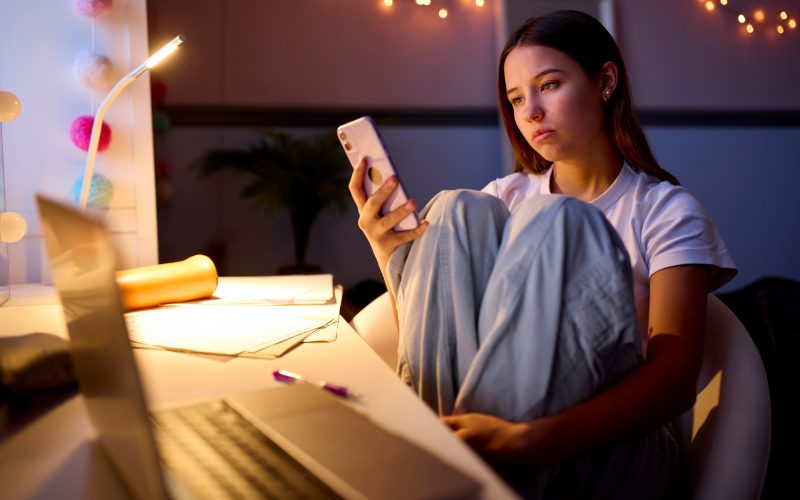We know that loneliness takes a toll on mental and physical health, but solutions for the problem are hard to come by. Matthew Shaer is contributing writer for The New York Times Magazine, an Emerson Collective fellow at New America and a founder of the podcast studio Campside Media. He joins host Krys Boyd to discuss how our phones and computers might have made the problem worse – but aren’t the root cause of our social disconnection – and the ways researchers are trying to approach what is now an epidemic. His article is “Why Is the Loneliness Epidemic So Hard to Cure?”
Your loneliness is a mindset
By Madelyn Walton, Think Intern
As we know all too well, the pandemic caused severe disconnection between people and made it hard to socialize. People relied on their smartphones and devices to stay in touch. One-in-three U.S. adults 18 and over report that they are online “almost constantly.”1 But the shift from in-person hang outs to interactions through a computer screen wasn’t the only factor. During this isolation period, the problem of loneliness only got worse.
Matthew Shaer, writer for The New York Times Magazine, joined Krys Boyd on Think to talk about his article “Why Is the Loneliness Epidemic So Hard to Cure?”.
Shaer says that the reasons for increased loneliness could be from, yes, the pandemic, social media, societal changes, lack of meaningful connections– or it could just be our “new normal.”
Disconnection and isolation most certainly create a sense of loneliness, but Shaer says that “to address those problems, you can’t just turn back the clock. You have to rethink the problem entirely — and the potential solutions too.” 2
He mentions that back in the day, when radio was new, it prevented us from feeling lonely when family was far apart. “We used radio to expand our world and to talk to people on the other side of the country,” he says. “We adapted.”
It’s in our human nature to put blame on something else when we don’t want to hold ourselves accountable. In this case, we try to blame social media for our loneliness. Social media is our connection to the outside world when we can’t physically be there. Sometimes it causes FOMO (Fear Of Missing Out), but it can also bring us closer.
Physical togetherness looks a little different these days. It can be seen as “a romance that exists partly in the real world and partly online, and in which emotional closeness is not diminished but enhanced by a steady stream of the sort of soul-baring disclosures that social media apps can facilitate,” says Shaer.
Rather than “find a solution” to loneliness, we must adapt to the changes of society and how togetherness looks. As Shaer says, “squint, and you can see it: a scenario in which the loneliness crisis today is really a mass period of acclimatization.”
1 https://www.hhs.gov/sites/default/files/surgeon-general-social-connection-advisory.pdf
2 https://www.nytimes.com/2024/08/27/magazine/loneliness-epidemic-cure.html





